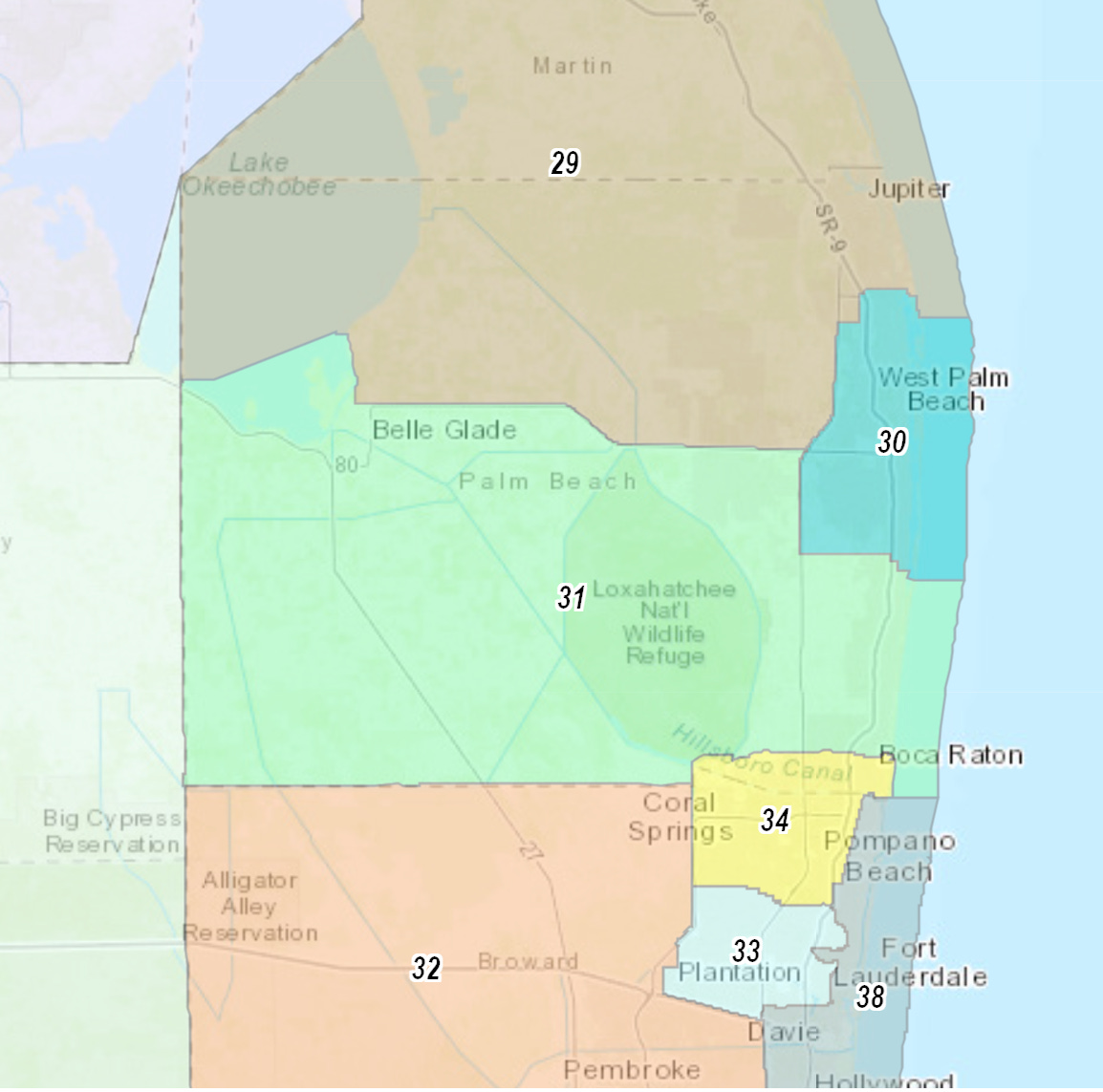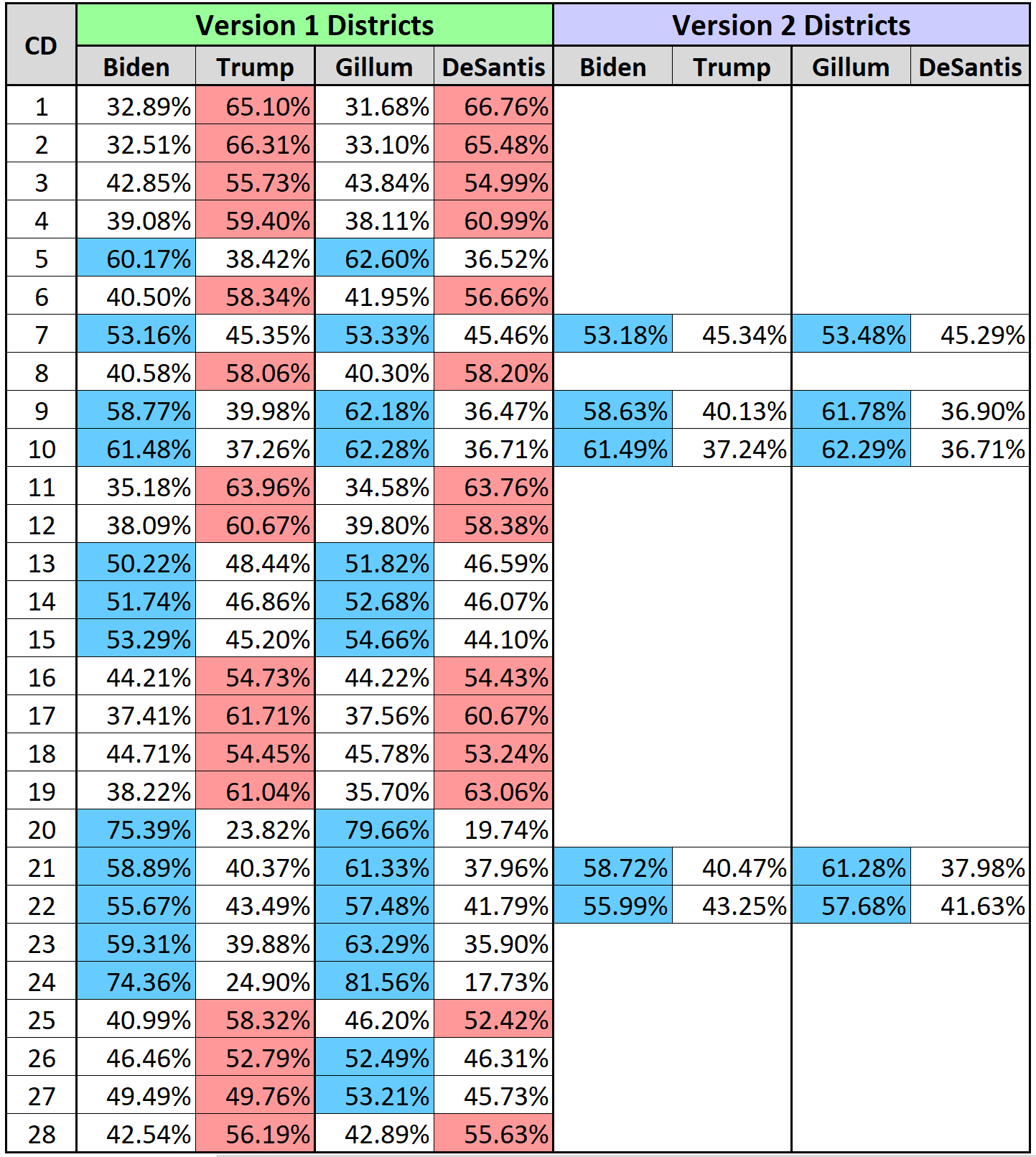Issue #27: More Redistricting Drafts from the State Senate
Small technical changes for the most part
The legislative session is just a few days away from its start, and we have more redistricting drafts out. The State Senate has released EIGHT new maps. Four are for Congress, and four are for the State Senate chamber themselves. Lets go over these.
Background
This marks the third time the State Senate has released drafts. I covered the initial plans released in early November in this substack post. At the time, I commented how the maps reflected the partisan nature of elections well. I recommend reading that post for more context. But here are the topline Presidential breakdowns for those initial plans.
The Congressional plan had Trump win a solid majority of districts, but actually tied between Gillum and DeSantis. The Senate likewise had Gillum and Nelson win more seats than Biden. The plans all reflected the swings of the state as a whole. While there were four drafts for each set, all draft differences did not alter the partisan performance of the maps; and instead reflected small alternative borders. Again look to that first substack post for more details and differences in the drafts.
Then, just before Thanksgiving, the Senate released more drafts. The new drafts made small edits to their initial plans, again not offering major partisan changes. The new drafts offered alternative lines for multiple districts, aiming to improve compactness scores and/or keep more cities/counties whole. I covered those drafts in this post.
New Drafts
So now we have more drafts from the state senate, and you guessed it, changes are small and technical. The Congressional and State Senate drafts all largely mirror previous drafts released. It largely looks like more cleanup and taking other considerations into account.
There are only a few big changes from previous drafts.
First, the Congressional drafts now take better care to keep the counties of Alachua and Sumter whole. These counties were needlessly split in initial drafts. Now Alachua is all in the 3rd district, and Sumter all in the 11th.

Note these county splits didn’t effect the partisan nature of the districts in any big ways. The cleanup now means two less counties are split. Good stuff.
In the state senate side, the biggest change is that some of the towns around Lake Okeechobee, like Belle Glade, are now going to be in SD31 and not SD29.
This is not a large number of voters and does not radically alter the partisan nature of the districts.
Overall the new sets of drafts offer small changes that improve county and city splits and re-locate some towns. If you already had the earlier drafts memorized, these new drafts don’t offer too much new information to be absorbed.
Differences in the Congressional Drafts
So we have four different drafts for Congress. Why four? What is so different? Well the truth is, of the 28 districts, 23 are the same across all plans. Only a few districts have alternative lines.
Districts 7, 9, 10, 21, and 22 have alternative borders. Otherwise the senate appears to be in agreement on all other districts.
The differences for 7, 9, and 10 are small. You can see Version 1 color-coded with Version 2 as the black lines. A handful of precincts are moved around. Again these changes are no big deal partisan-wise.
South Florida has the bigger debate. The first version of 21 and 22 feature a east-west dynamic, with CD22 being much more of a coastal district. The alternative lines stack 21 and 22 on top of each-other, giving both some coastline.
I talked about this before, but the Supreme Court of Florida has already taken issue with 22 being such a coast-hugger. However, map-drawers this time may feel the new court will be more accepting. One notable change from previous drafts is that 22 used to go further south down the coast. However, the new drafts stretch 23 to the south Broward coastline.
The partisan breakdown of these plans is below. As the table shows, the alternative district borders don’t change the partisan makeup much.
Trump wins 16 seats to Biden’s 12 (though 27 is neck-and-neck), while Gillum and DeSantis both take 14 a piece.
State Senate Draft Differences
Similar to the Congressional drafts, the state senate is largely in agreement on its chambers districts. The different drafts offer alternative lines for just 6 of the chamber’s 40 seats.
In North Florida, there are alternative districts for SD’s 5 and 8. The main debate here is where Gilchrist and part of Alachua will go.
In South Florida, there are alternative lines for a batch of the Broward state senate districts.
Like with the Congressional differences, these alternative lines do not alter the partisan makeup of the seats.
The State Senate maps are a bit more GOP friendly. Biden takes 17 seats to Trump’s 23, while Gillum gets just one more seat. This matches the partisan breakdown from earlier State Senate drafts.
We will see if the State House releases any new drafts in the coming days. Session will soon begin!














